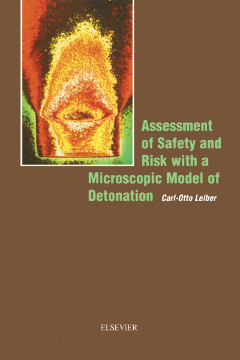
Additional Information
Book Details
Abstract
This unique book is a store of less well-known explosion and
detonation phenomena, including also data and experiences related to
safety risks. It highlights the shortcomings of the current
engineering codes based on a classical plane wave model of the
phenomenon, and why these tools must fail.
For the first time all the explosion phenomena are described in terms
of proper assemblages of hot spots, which emit pressure waves and
associated near field terms in flow. Not all of the approaches are
new. Some even date back to the 19th century or earlier.. What is new
is the application of these approaches to explosion phenomena. In
order to make these tools easily available to the current detonation
physicist, basic acoustics is therefore also addressed.
Whereas the current plane wave, homogeneous flow detonation physics
is an excellent engineering tool for numerical predictions under
given conditions, the multi-hot-spot-model is an additional tool for
analyzing phenomena that cannot be explained by classical
calculations. The real benefit comes from being able to understand,
without any artificial assumptions, the whole phenomenology of
detonations and explosions. By specifying pressure generating
mechanisms, one is able to see that the current treatment of the
detonics of energetic materials is only a very special - but powerful
- case of explosion events and hazards. It becomes clear that
physical explosions must be taken into account in any safety
considerations. In these terms it is easy to understand why even
liquid carbon dioxide and inert silo materials can explode.
A unique collection of unexpected events, which might surprise even
specialists, has resulted from the evaluation of the model. Therefore
this book is valuable for each explosion and safety scientist for the
understanding and forecasting of unwanted events. The text mainly
addresses the next generation of explosion and detonation scientists,
with the goal of promoting the science of detonation on a new
physical basis. For this reason gaps in current knowledge are also
addressed. The science of explosions is not fully mature, but is
still in its beginning - and the tools necessary for furthering the
understanding of these phenomena have been with us for centuries.
